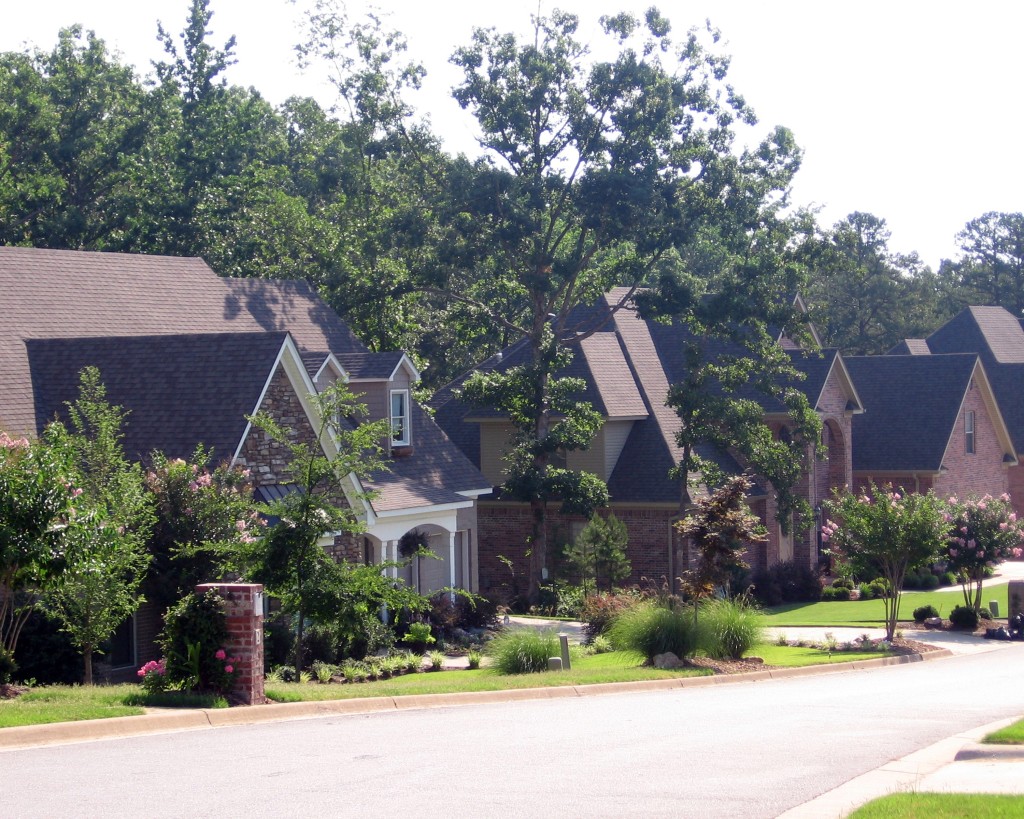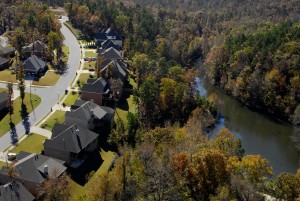Builders looking for a good example of what becoming certified under the ICC 700 National Green Building Standard (NGBS) can do for the market value of a property need look no further than Woodland’s Edge. The low impact development, which is located in the foothills of the Ozark Mountains in the western part of Little Rock, Ark., was the first development in the nation to receive a Green Certified-Four Star community award based on the NGBS program.
NGBS, which was created through a partnership between the International Code Council and NAHB through a rigorous American National Standards Institute consensus process, recognizes the importance of green site development by devoting two chapters exclusively to “Site Design and Development” (chapter 4) and “Lot Design, Preparation and Development” (chapter 5). Chapter 4 provides a stand-alone rating system for green subdivision site design and development. Chapter 5 addresses site design and development of individual lots as a component of a green home.

Photo Courtesy of Tyne and Associates
Rocket Properties, the developer, and Tyne and Associates, the landscape architect and planner, successfully took the project through its steps towards certification by preserving the natural and scenic qualities of the site. They accomplished this by using sustainable concepts for layout, configuration and design of lots, structures, roads, underground utility lines and other infrastructure.

Photo Courtesy of Tyne and Associates
The 778-acre site is characterized by rolling terrain and steep ridges and forest and contains three pristine streams as well as wetlands. From the beginning, the planning and development of Woodland’s Edge focused on preserving more than 40 percent of the land as undisturbed forest and meadow. To date, 350 acres, including 604 home sites in eight neighborhoods, have been developed. To meet the 40 percent goal, the development team employed innovative low impact development practices that reduced development costs and added great value to the community. Needless to say, this effort has contributed greatly to the market‘s positive response to the neighborhood.
While the developer does not yet have complete figures for Woodland’s Edge, it relied on figures derived from Gap Creek, in Sherwood, Ark., which was developed in the late 1990s, for planning Woodland’s Edge. Gap Creek is another sustainable community Tyne & Associates designed. The following chart compares two different sites plans to show what sustainable practices can do:
A Comparison of Two Different Site Plans
| Project Results from Total Development | |||
| Total Site | Conventional Plan | Sustainable Plan | |
| Lot Yield | 358 | 375 | |
| Linear Feet Street | 21,770 | 21,125 | |
| Linear Feet Collector Street | 7,360 | 0 | |
| Linear Feet Drainage Pipe | 10,098 | 6,733 | |
| Drainage Structures: Inlets/Boxes/Headwalls | 103 | 79 | |
| Estimated Total Cost | $4,620,600 | $3,942,100 | |
| Estimated Cost Per Lot | $12,907 | $10,512 | |
| Actual Results from Phase One | |||
| Phase 1 | Conventional Plan | Sustainable Plan | |
| Lot Yield | 63 | 72 | |
| Total Cost | $1,028,544 | $828,523 | |
| Total Cost Per Lot | $16,326 | $11,507 | |
| Economic and Other Benefits from Low Impact Development | |||
| Higher Lot Yield | 17 additional lots | ||
| Higher Lot Value | $3,000 more per lot over competition | ||
| Lower Cost per Lot | $4,800 less per lot | ||
| Enhanced Marketability | 80 percent of lots were sold in the first year | ||
| Added Amenities | 23.5 acres of green space/parks | ||
| Recognition | National, state and professional groups | ||
| Total Economic Benefit | More than $2,200,000 added to profit | ||

Photo Courtesy of Tyne and Associates
The developer achieved points under NGBS for using the following techniques:
- Planning to protect natural resources onsite
- Using care to locate streets, buildings, utilities and other features to conserve vegetation
- Avoiding steep slope areas
- Incorporating native plants and vegetation
- Preserving wildlife habitats and corridors
- Management of stormwater
Conclusion

Photo Courtesy of Tyne and Associates
Upon completion, Woodland’s Edge will consist of about 800 homes interwoven with 300 acres of heavily forested green space that is traversed by miles of hiking and nature trails. Half of the homes built were pre-sold and 80 percent of the remainder will be sold before completion. This is not typical for developments in Little Rock in the current market, but Ron Tyne of Tyne and Associates, landscape architect and planner for the site, attributes this success to the aesthetic appeal created by adhering to NGBS for site and lot development. The techniques used cost less than traditional site development techniques, which allowed additional amenities such as trails and parks to be incorporated.
As Ron Tyne, of Tyne & Associates, explains: “From the very beginning, preservation of nature has been the centerpiece of our green development. Natural beauty abounds in Woodland’s Edge, and the market has responded aggressively. They [potential buyers] love the green spaces.” As a result, “we are experiencing both high demand and high values even in this downturned market,” he concludes.

